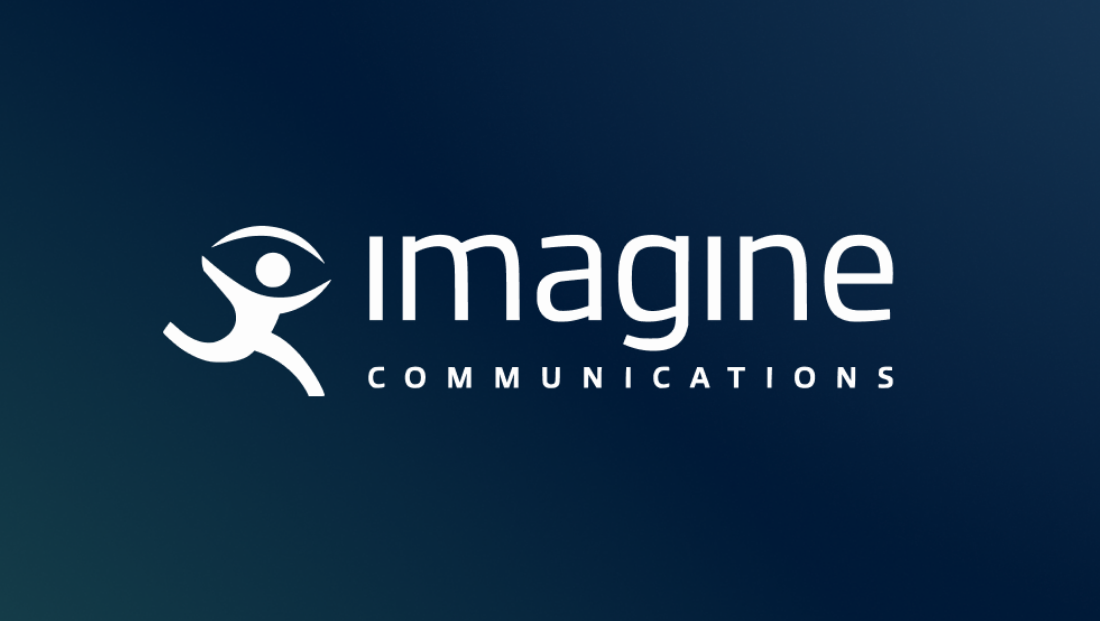Imagine’s Steve Reynolds on the evolving adtech and monetization landscape

Subscribe to NCS for the latest news, project case studies and product announcements in broadcast technology, creative design and engineering delivered to your inbox.
Adtech and monetization remain central to the broadcast industry’s ongoing transition from purely linear distribution to one that blends traditional and streaming platforms.
Steve Reynolds, CEO of Imagine Communications, sees this shift as less of a sudden pivot and more of an evolving revenue model.
“People are finally starting to understand that the debate of linear versus digital was the wrong debate,” Reynolds said. “We are going to be in an environment of linear plus digital, probably for a decade, maybe longer.”
In a conversation during the 2025 NAB Show, he noted that many broadcasters and networks, especially in the United States, historically built siloed infrastructures: one for linear ad sales and another for digital or streaming. In Reynolds’s view, maintaining these separate technology stacks heightens costs and operational overhead.
“The approach a lot of people took early on was: here’s a tech stack for linear origination, and here’s one for streaming. And by the way, that still is the predominant view,” he explained. “But we are starting to see some early adopters in the U.S. thinking about unifying those stacks and thinking about how to unify ad sales models.”
Reynolds noted examples from outside the United States, such as the United Kingdom and the Nordics, where unified advertising practices have taken hold more quickly.
“In the UK, the ad market has largely moved to a unified selling model,” he said. “Sky and ITV sell on an audience basis — across linear, on-demand, streaming and addressable — allowing them to sell converged inventory. They’ve found that commercially successful.”
Finding efficiencies in ad insertion
One major point Reynolds emphasized is the rising need for broadcast-quality standards in digital advertising. He pointed to “a glut of inventory” within connected TV (CTV) services, which has driven prices down and made it more difficult for media companies to set their content apart.
“There’s so much CTV inventory right now,” Reynolds said. “All of those AVOD and FAST services launched fairly quickly, creating more than 2,000 FAST channels between 2022 and 2023. That’s a lot of inventory. It’s largely undifferentiated because it’s sold the same way, through the same set of SSPs and DSPs, and that drives down price.”
In an effort to give media companies better control and potentially higher returns, Imagine Communications rolled out a solution called SureFire, designed to insert broadcast-quality rules into digital ad placement.
“The last commercial you see before a football match starts, for instance, might be a Nike spot,” Reynolds said. “It doesn’t matter if you’re watching linear, streaming, or on-demand, everyone gets the same ad in that spot. That’s something that none of the traditional ad insertion platforms have really done before.”
Unified sales for a converged audience
These converged ad insertion tools are part of a broader discussion about making sales teams more effective. Traditionally, a media company’s linear and digital ad sales teams operate independently, each focusing on different inventory forms. But with overlapping audience segments, Reynolds argued that such separation no longer makes sense.
“Most publishers still have two different organizations,” he said. “They think they sell spots backed up by rating points, and they think they sell impressions backed up by beacon data. Advertisers don’t care about that distinction. They care about reaching the audience they want to reach. When you start thinking of inventory as the audience, that changes everything.”
A unified approach allows sellers to match the right advertiser with the right viewer, whether that viewer is watching on a traditional broadcast or an online stream. That approach, he suggested, also opens the door to advanced attribution.
“We want closed-loop measurement, and we want it across the entire audience,” he said, referencing potential collaborations with companies like Nielsen, Comscore or iSpot.
Operational considerations and ROI
“Linear ad revenue is coming down, but digital revenue hasn’t scaled up to fully replace it,” he said. “So, as a media company, you’re trying to improve the top line by boosting digital CPMs while you simultaneously reduce the cost of operations.”
In that context, Reynolds noted how Imagine Communications’ Aviator merges playout across linear and digital platforms to streamline operations.
“Why are some customers using one silo for linear, another for streaming and in some cases a third for FAST?” Reynolds asked. “All you’re really doing is taking in a playlist, marking insertion points, and inserting a commercial.”
He explained that Aviator aims to create a single interface to handle both play-out and streaming origination using the same resource base. In doing so, media companies can achieve greater automation and decrease costs.
Risk and reluctance in technical upgrades
Though Reynolds advocates for a converged approach to ad sales and operations, he acknowledged a key obstacle: risk aversion. Many legacy broadcast systems run reliably, and any upgrade carries disruption risks — particularly if those systems provide revenue-critical functions.
“You’ve got a lot of technical debt in this industry,” Reynolds said. “In uncertain economic times, it’s even harder to pull the trigger on new investments.” He added, “But the decision making is going higher now. It’s not just the chief engineer; it’s the CTO, and sometimes the CFO, asking for a risk analysis and payback period.”
He pointed to earlier examples of the industry’s initial attempts to migrate to cloud workflows, which often met with sticker shock.
“Especially if you’re running a 24/7 broadcast, the math on moving full-time operations to the public cloud doesn’t always work out,” Reynolds said. “For occasional usage — like a tennis tournament with 32 courts — cloud-based infrastructure saves CapEx. But for a full-time schedule, local data centers or existing facilities might be more cost-effective.”
Looking forward, Reynolds said he sees potential in AI, but with the same caveat.
“People need to ask why, not just how. Last year, everyone was talking about the buzz of AI. This year, conversations are starting to focus on how it drives revenue or cuts costs.”
With AI solutions expensive to run, Reynolds noted, “you need a significant revenue boost or efficiency gain, 20 or 30 percent, before it’s worthwhile.”
For now, the biggest questions in monetization revolve around bridging the divide between linear and digital.
“We have to look at audience as the inventory, not the time slot,” Reynolds said. “That’s how you make every impression count. The technology is there to unify it, but organizational barriers and legacy infrastructure can slow progress.”
“Can you pull in enough new revenue to justify the investment? Are you prepared to rethink how you value and manage your ad inventory? If you can answer yes, you’re probably ready to unify your approach to linear and digital.”
Subscribe to NCS for the latest news, project case studies and product announcements in broadcast technology, creative design and engineering delivered to your inbox.







tags
Ad-Supported Video on Demand (AVOD), Adtech, Advertising, Advertising Management, Broadcast Monetization, Connected TV, Imagine Communications, Imagine Communications Aviator Automation, Imagine Communications SureFire, NAB Show 2025, NAB Show News, Steve Reynolds
categories
Advertising, Content Delivery and Storage, Heroes, NAB Show